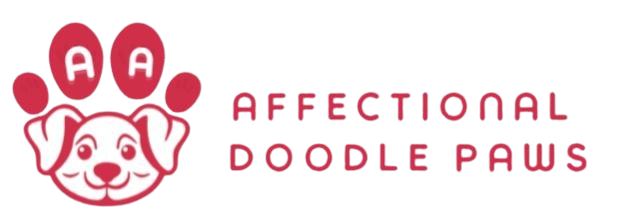Goldendoodles are a cross between Golden Retrievers, known for their calm and loving nature, and Poodles, renowned for their intelligence, cheerful disposition, and low-shedding curly coats. A well-bred Goldendoodle is characterized by its fluffy and cuddly appearance, eagerness to please, and ease of training. They are known for their low barking tendency and minimal shedding, with wavy or loosely curled coats. Goldendoodles exhibit high tolerance and low aggression, making them excellent family pets, especially suitable for first-time dog owners. Their adaptable exercise requirements make them well-suited for apartment living, as they can thrive with both vigorous activities like running and shorter walks. These dogs form strong bonds with their human companions and prefer not to be left alone for extended periods.
The Golden Doodle is one of the most well-liked breeds globally due to its charming appearance and amiable disposition.
They are highly intelligent, gentle, and upbeat, making it easier to housetrain a young Golden Doodle compared to other breeds of similar size.
This makes them a suitable choice for families with older children, seniors, and busy individuals. Golden Doodles have round faces, floppy ears, and endearing large eyes, which contribute to their adorable appearance.
Golden Doodles are renowned for their kind, affectionate, sensitive, and calm temperaments, making them ideal as therapy and emotional support dogs.
Golden Doodles possess high intelligence and energy levels. They require both physical and mental stimulation to maintain their well-being, health, and obedience.
Golden Doodles have the remarkable ability to detect fluctuations in blood glucose levels, making them a valuable asset to any family.
Explaining Doodle Generations
What’s All This F1, F1b, F1bb Talk?
I get this question a lot, so I gave “Explaining Generations” it’s own page! The more specific you can be about what you want the better I can do my job at getting you the puppy of your dreams! So I feel it is very important to understand this information.
GOLDENDOODLE
Pure bred Golden Retriever + Pure bred Poodle = F1 Goldendoodle (50% Golden Retriever/50% Poodle)
F1 Goldendoodle + Poodle = F1b (25% Golden Retriever/75% Poodle)
F1b Goldendoodle + Poodle = F1bb (12.5% Golden Retriever/87.5% Poodle)
F1 Goldendoodle + F1 Goldendoodle = F2 (50% Golden Retriever/50% Poodle) *may not get furnishings (teddy bear look)
F1 Goldendoodle + F1b Goldendoodle = F2b (37.5% Golden Retriever/62.5% Poodle)
F1b Goldendoodle + F1b Goldendoodle = F3 (25% Golden Retriever75% Poodle)
Any Goldendoodle F3 or higher bred to another F3 is considered a multigenerational Goldendoodle.
(The higher the poodle percentage the more hypoallergenic and presumably curly they will be.)
*Did you know that some goldendoodles won’t get the teddy bear look if parents don’t carry the (FF) Fully Furnished gene? This is another reason genetic testing and screening is very important. Most people love goldendoodles for their awesome teddy bear look. If breeders don’t pay close attention to genetics, they may not end up getting the look that they are going for which can make for under satisfied customers.
CAVAPOO
Pure breed King Charles Cavalier + Pure breed Poodle = F1 Cavapoo (50% Cavalier/50% Poodle)
F1 Cavapoo + Poodle = F1b (25% Cavalier/75% Poodle)
F1b Cavapoo + Poodle = F1bb (12.5% Cavalier/87.5% Poodle)
F1 Cavapoo + F1 Cavapoo = F2 (50% Cavalier/50% Poodle).
F1 Cavapoo + F1b Cavapoo = F2b (37.5% Cavalier king’s /62.5% Poodle)
F1b Cavapoo + F1b Cavapoo = F3 (25% Cavalier kings/ 75% Poodle)
(The higher the poodle percentage the more hypoallergenic and presumably curly they will be.).
Maltipoo
Purebred Maltese + Purebread Poodle = F1 Maltipoo (50% Maltese/50% Poodle)
F1 Maltipoo + Poodle = F1b (25% Maltese/75% Poodle)
F1b Maltipoo + Poodle = F1bb (12.5% Maltese/87.5% Poodle)
F1 maltipoo + F1 maltipoo = F2 (50% Maltese/50% Poodle)
(The higher the poodle percentage the more hypoallergenic and presumably curly they will be.).
*Did you know that some cavapoos won’t get the teddy bear look if parents don’t carry the (FF) Fully Furnished gene? This is another reason genetic testing and screening is very important. Most people love goldendoodles for their awesome teddy bear look. If breeders don’t pay close attention to genetics, they may not end up getting the look that they are going for, which can make for under satisfied customers.
Weights/Sizes
Knowing the weights and sizes a puppy will be as an adult is a little bit of a guessing game! We can NOT guarantee the exact weight your puppy will be in adulthood. We are able to make a pretty educated guess though. The puppy’s weight ia dependent on the size of the Dame and Sire. They are usually a range of weights between the two. For example a Sire who weighs 10lbs and a Dame who weighs 25lbs will have puppies who weigh an average of 17.5lbs pounds… so you could have a litter that has 5 puppies and have the following adult weighs: 10, 13, 15, 19, and 25. That is why there is such a gap in guessing what puppies will weigh as adults. We track the puppy’s weights weekly to give us a better f for when they go to your home at 8 weeks .
BERNEDOODLE
Pure bred Bernese + Pure bred Poodle = F1 Bernese (50% Golden Retriever/50% Poodle)
F1 Bernedoodle + Poodle = F1b (25% Bernese/75% Poodle)
F1b Bernedoodle + Poodle = F1bb (12.5% Bernese/87.5% Poodle)
F1 Bernedoodle + F1 Bernedoodle = F2 (50% Bernese/50% Poodle) *may not get furnishings (teddy bear look)
F1 Bernedoodle + F1b Bernedoodle = F2b (37.5% Bernese/62.5% Poodle)
F1b Bernedoodle + F1b Bernedoodle = F3 (25% Bernese 75% Poodle)
Any Bernedoodle F3 or higher bred to another F3 is considered a multigenerational Bernedoodle.
(The higher the poodle percentage the more hypoallergenic and presumably curly they will be.)
